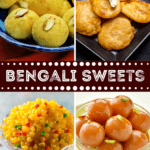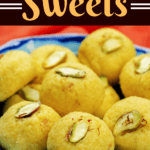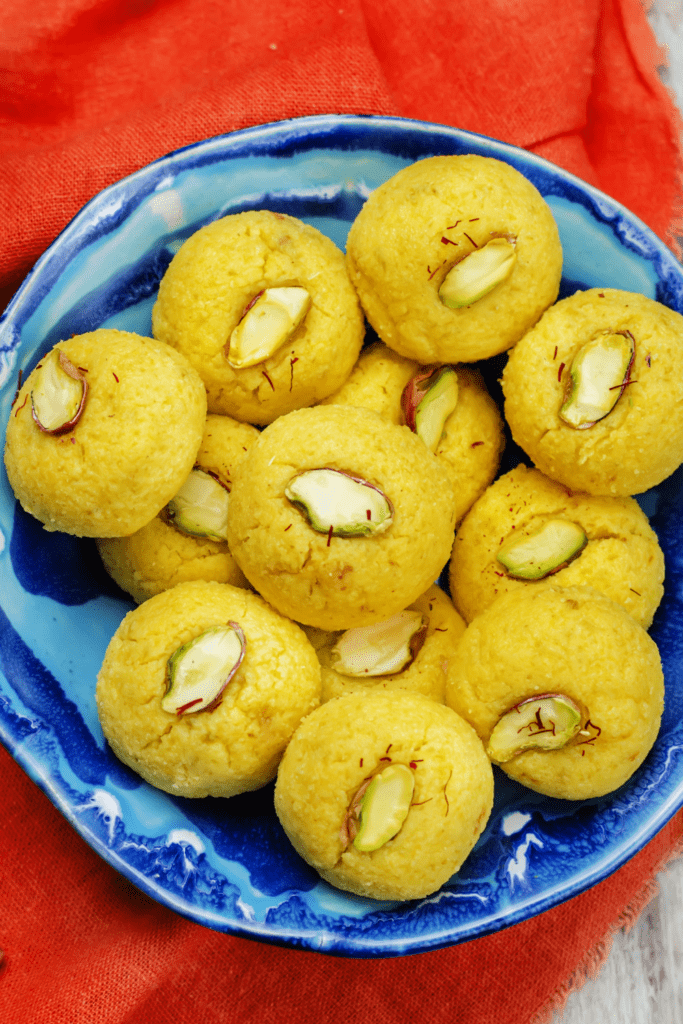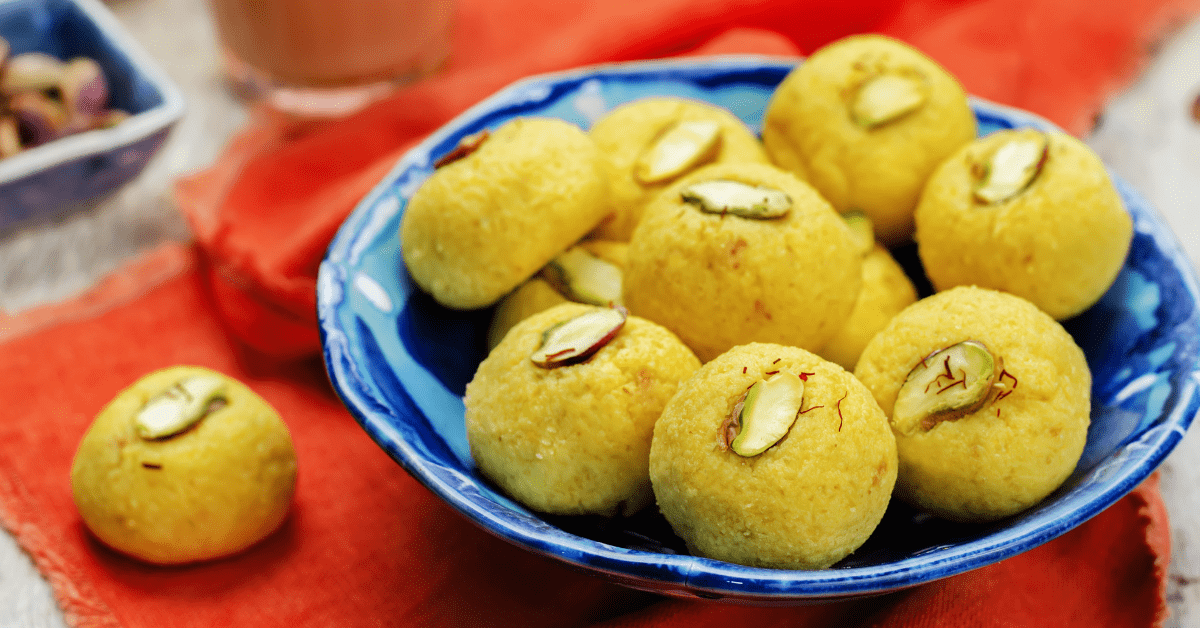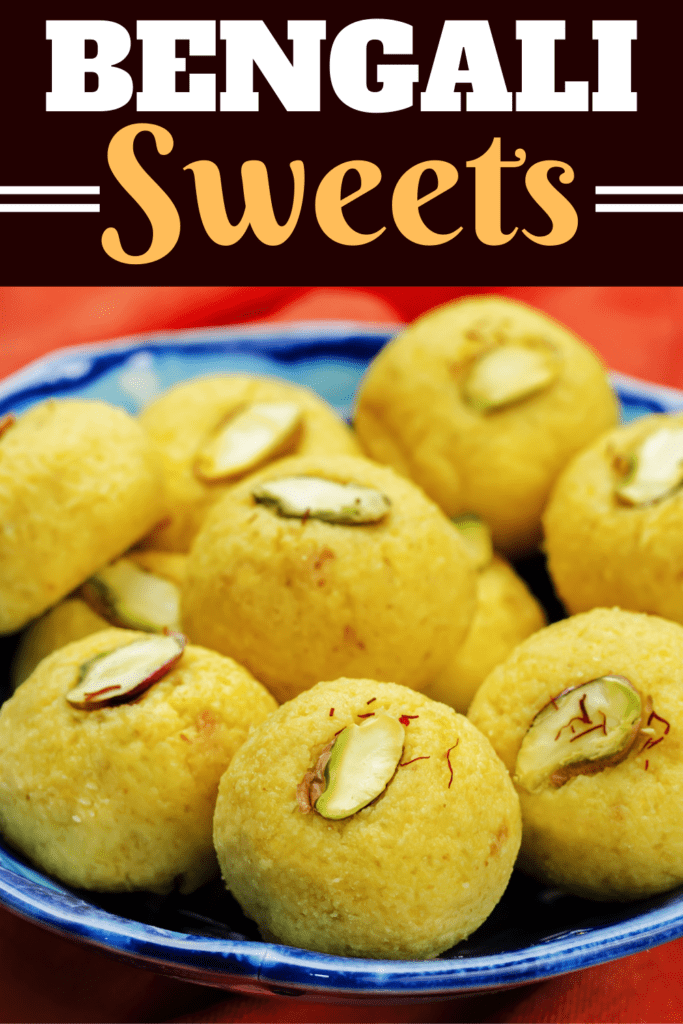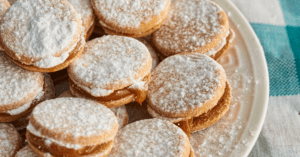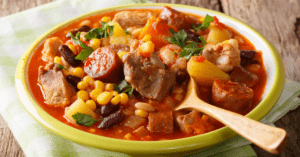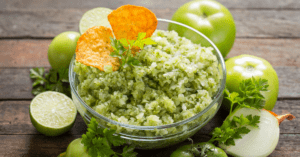Bengali sweets are any desserts, candies, or other confections originally from or frequently consumed in either Bangladesh or parts of India. Bengali sweets contain lots of whole milk, heavy creams, nuts, cardamom, and other uniquely Eastern flavors. They run the gamut from mildly sweet and floral-like to extremely sugary sweet. Bengali cuisine is also known for its numerous ball-shaped sweet treats. Whatever your tastes, you’re sure to find something you like with these Bengali sweets.
1. Khoya
Khoya isn’t so much a Bengali sweet as it is an ingredient for Bengali sweets. Khoya is milk that’s been dried and evaporated until it turns into a solid with the consistency of damp oatmeal. You won’t eat it by itself, but it’s an essential ingredient for many Bengali and Indian desserts. Although you can buy it in the store, things made with homemade khoya taste so much better. That’s why I wanted to share a recipe with you that would show you how to make your own. It doesn’t take a lot of skill to make, but it does take some time. After it’s done, it’ll only keep for about a week in the freezer, so don’t try to make it too far in advance of making your sweets.
2. Sandesh
Sandesh is probably one of the most well-known Bengali/Indian desserts. They’re small, rounded cookies made primarily from milk and sugar, although they require a few extra ingredients to curdle the milk and decorate the cookies. They’re somewhat on the dry side, and they have an interesting texture. There are variations on the standard recipe, mainly dealing with decoration. They’re very sweet and very good, especially with a tall glass of milk or a warm mug of hot chocolate.
3. Boondi
Boondi is less of a dessert and more of a snack food. You might compare it to our trail mixes in America or maybe a bag of sweet Chex Mix. There are two types of boondi. There’s sweet boondi, which is what you’ll make with this recipe, and savory boondi, which is crunchy, salty, and occasionally a little spicy depending on the cook. It requires relatively simple, everyday ingredients to make, but there are a few tricky parts in the recipe to get it just right. If you mess up the first batch, don’t despair. Practice makes perfect!
4. Mishti Doi
It takes about 5 minutes and only four ingredients to pull this delicious dessert drink together, but it takes another 30 minutes to cook. It tastes best when served cold, so you’ll want to refrigerate it after making it. It tastes great along with meals or as an after-dinner treat.
5. Chaler Payesh
Chaler payesh is the traditional “get-together” food for Bengali families. It’s used for holiday celebrations, house-warming parties, and plenty of other social events. Its American equivalent would probably be lemon squares or brownies – two things that always seem to show up at any potluck. It’s a sweet rice pudding flavored with cardamom powder and garnished with various nuts. It’s sweet, nutty, and I always add just a hint of salt.
6. Gulab Jamun
Whether you make them with milk powder or khoya, gulab jamun isn’t spectacularly sweet. They’re berry-sized balls of deliciousness that are deep-fried to the perfect crispy texture. Once you dunk them in the hot, sugary syrup, they soak up the sweetness and the moisture and take on a whole new flavor. Many people add rose water to the syrup, and I think that gives it a wonderful floral flavor that makes them unique, but you can leave that out if you want. Garnishing them with pistachios is also quite common.
7. Chanar Payesh
In some ways, chanar payesh is similar to gulab jamun; they’re both sweet balls dunked in even sweeter sauces. Chanar payesh, however, is submerged in sugary, creamy milk and served cool. The cottage cheese flavor is set off nicely by the raisins, sugar, and nuts added to the dessert.
8. Cham Cham
If you were to buy cham cham in a sweet shop, you would find it in all different colors and designs. However, this recipe makes a more traditional, less fancy cham cham. It still tastes just as impressive, though. To make cham cham, you’ll start by curdling, cooling, and straining milk. Then you’ll knead it into cylindrical shapes and cook them in light syrup. Eventually, you’ll add in the mawa and powdered sugar filling. Then you’ll roll them in coconut flakes and enjoy! They’re soft, slightly spongy, and have an almost tropical flavor to them.
9. Malpua
The proper ingredients for malpua may be a little hard to find, but this recipe provides you with a list of other more easily found ingredients. If you enjoy pancakes, I suggest you find them and make these ASAP. They’re so good. They’re a little crispier and have a slightly different texture than the pancakes you’re used to eating. Even so, you’ll love their mild sweetness and the slight bit of zest you’ll get from the lemon juice.
10. Rabri
Rabri isn’t a dish you can whip up in a couple of minutes. The prep time is almost non-existent, but it takes about an hour to cook, and you have to watch it and actively cook it. You can’t let it sit on its own. It needs only a few ingredients – whole milk, sugar, saffron, cardamom powder, rose water, almonds, and pistachios – but it takes some patience and practice to get it right. Once you have it, though, you’ll be so glad you took the time to learn. It’s sweet, creamy, and wonderful, and it’s hard to stop eating it once you get started.
11. Rasgulla
Rasgulla is one of the most well-known Bengali sweets, and like most of the recipes, it requires few ingredients but a little bit of time and patience to master. This is one of the easier ones to learn to make, so if you’re just starting to make Bengali sweets, rasgulla is an excellent place to start. The only fundamental ingredient in the balls is milk, although you’ll need lemon juice to curdle it and ice cubes to cool it down. The sugar syrup requires a few more ingredients but is just as easy to make. When done, rasgulla is spongy, soft, and has a delicate, floral flavor that you’ll love.
12. Rasmalai
Like many Bengali sweets, rasmalai consists of two parts – the soft rasmalai balls and the thickened milk sauce in which the balls are served. I’m not Bengali or Bangladeshi, but my understanding is that rasmalai is the more “high-class” version of rasgulla, and that it’s usually only broken out for special occasions. Once you taste it, however, that might be a rule you start breaking because these soft, flavorful treats are too yummy only to have once or twice a year.
13. Amriti
Amriti is kind of like a sweeter, crispier, more interestingly shaped version of funnel cake. It’s made with Basmati rice, urad daal, all-purpose flour, sugar, ghee, and lime juice. The flavor is fantastic, but the satisfying crunch when you bite into it is even better.
14. Langcha
These odd desserts may look like corn dogs without sticks, but they’re certainly not. Instead, they’re deep-fried treats made of homemade cottage cheese and served with flavorful sugar syrup. You can toss some chopped pistachios on them if you want to add a bit of a crunch. *Note: This specific recipe doesn’t use the traditional homemade cottage cheese mixture, and it’s a little easier to make.
15. Mango Darbesh
This unique dish takes very little time to make and is easier to get right on the first try than some of the others on this list. (Although you shouldn’t get discouraged! You’ll get the hang of all of these!) It combines several distinct ingredients – mango puree, cottage cheese, sugar, raisins, and more – into something that’s unlike anything I’ve ever tasted. It’s hard to explain the taste, although the mango certainly comes through; my advice is just to give it a try. You won’t be disappointed.
16. Nolen Gurer Payesh
Although you can serve this yummy rice pudding chilled, I prefer it when it’s fresh out of the pan. It tastes so much richer and fuller when it’s warm. You’ll make it with Basmati rice, milk, dates palm jaggery, nuts, raisins, Indian bay leaf, and cardamom. (Palm jaggery is just palm sugar, by the way. Don’t let the name scare you.) It takes about an hour total to make this dish, but it’s worth it. It’s not excessively sweet, and I prefer serving it for breakfast rather than dessert. It’s such a pleasant, tasty way to start the day.
17. Kheer Kadam
This is another excellent place to start if you’re looking for easy-to-make Bengali desserts. It combines khoya, cardamom, sugar, milk, and a few other things. You’ll roll the outside in grated coconut and sugar icing, and the inside features the airy, one-of-a-kind flavor of saffron. It’s sure to be a fast favorite.
18. Nikuti
I love this specific recipe for nikuti. It gives you easy-to-follow, step-by-step instructions. There’s also a bonus recipe for two-ingredient chana, which is the homemade cottage cheese I mentioned earlier. You can use the chana recipe, along with the other needed ingredients, to make the nikuti. The hardest part is kneading and shaping the dough. Everything else is pretty simple and straightforward.
19. Naru
Some people refer to naru as coconut ladoos, and they often serve them on festival days. You’ll make them with two simple ingredients – organic jaggery powder and grated coconut. You’ll also need some ghee or coconut oil to cook them, and you can add a half-teaspoon of cardamom for the extra flavor if you like. They take 5 minutes to prepare and 10 to cook. You can’t beat that kind of simplicity.
20. Lavang Latika
Of all the recipes on this list, lavang latika is one of my favorites because it’s just so different from anything I’ve ever had. It’s rich and filling, and it smells incredible, both while cooking and after it’s done. It’s even shaped uniquely, with some people calling it “pocket-shaped.” Its whole wheat crust is crunchy, but the filling, made from mawa, nuts, coconut, and dried fruits, is soft and full of flavor. You can also coat it in syrup and add nuts to the top for an extra crunch.
21. Sita Bhog
This recipe isn’t one of the more well-known desserts in Bangladesh, but it’s a favorite of most locals. Unlike most other Bengali desserts, this one uses quite a few ingredients. It also takes quite a while to make. However, if you have the time and the ingredients on hand, I recommend giving it a try. The final flavor is full of complex, contrasting tastes that will delight anyone with taste buds.
22. Kolar Bora
Of all the ball-shaped Bengali desserts, kolar bora is my favorite, probably because I love bananas. I also love how quick and easy these are to make. You’ll start by peeling and mashing your bananas, then adding sugar to them. Then you’ll add in your other dry ingredients and roll the mixture into small balls of dough. Then it’s just a matter of frying them, draining the oil, and enjoying the warm banana-y goodness.
23. Goja
You probably already have everything you need to make goja. All it takes is flour, baking soda, water, vegetable oil, and ghee. You’ll also need some sugar to make the syrup. When finished, goja has a consistency that’s similar to a layered piece of fudge. It’s soft and a little crumbly. It’s very sweet, though, so I suggest serving it with hot tea.
24. Mohan Bhog
As anyone who knows me can tell you, I love beautiful desserts. If something tastes good and is also lovely, it rises to the top of my list of favorites quickly. This golden floof is definitely pretty. Plus, it tastes magnificent, kind of like a nutty pudding, with just a hint of cardamom, saffron, and raisins.
25. Bhapa Doi
Also known as “steamed yogurt pudding,” this chilled dessert is light, delicate, and only mildly sweet. It’s also a cool and refreshing change to many of the syrupy sweet, warm Bengali desserts. You can make it with yogurt or curds. You’ll also need condensed milk, saffron milk, cardamom powder, and some butter and nuts to top off the dish. You can have it ready to cook in about 5 minutes, but it has to rest in the fridge for a couple of hours first. Then it only takes about 20 more to finish. Chill it for about half an hour before you serve it, though.
Click on a star to rate it!
Average rating 5 / 5. Vote count: 2 No votes so far! Be the first to rate this post.
Share on social media: Let us improve this post!
